
Flight from Manila to Luwuk
Flight Deals from Philippines✈️
Flight Information from Manila (MNL) to Luwuk (LUW)
Cheapest one-way flight
Cheapest round-trip flight
Cheapest month to fly
Shortest flight duration
When Is the Cheapest Month & Date to Fly from Manila to Luwuk?
About Luwuk
Luwuk is the biggest town in Sulawesi’s eastern peninsula and is set around a mountainous natural harbour. Luwuk has been a small town much isolated from the rest of Indonesia but is now, thanks to modernization airways linking Luwuk to the rest of the world, Luwuk is welcoming travellers to its shores. Many use Luwuk as a stepping stone to the Togean Islands and also as a gateway to get to the less popular but impressive Banggai Islands.
Best time to fly from Manila to Luwuk
If you are planning a trip to Luwuk, the best time to plan your visit would be from January to October, and also in December. During these months, the temperature in Luwuk is at its mildest and you will only experience mediocre rainfall. Luwuks temperature does not fluctuate much throughout the year, with its average being between 32 degrees Celsius to 30 degrees Celsius, making Luwuk suitable for a sunny holiday getaway.
Main airports available in Manila and Luwuk
Ninoy Aquino International Airport (MNL) – The Ninoy Aquino International Airport or NAIA is more commonly known as Manila International Airport and is the main airport serving Manila and its surrounding metropolitan area. Located on the border between Pasay City and Paranaque City, the airport is approximately 7 kilometres south of Manila. The most common mode of transportations used to get to the airport are the bus, rail, taxi and rental car. Though not that far from the city, the best way to get to and from the airport is by taxi. It takes 30 to 45 minutes to get to downtown Manila by taxi and fares are around PHP 300 to PHP 450. The airport bus to downtown Manila and costs approximately PHP100. NAIA offers all the amenities of a modern airport such as ATM's, currency exchange, duty-free shops, lounges and restaurants. If you're heading out, don't forget to stop by the Philippines most famous fast-food chain, Jollibee and fill yourself up before your trip.
Syukuran Aminuddin Amir Airport (LUW) – The Syukuran Aminuddin Amir Airport is an airport located in Luwuk, the capital city of the Banggai Regency in Central Sulawesi in Indonesia. The airport is located in Desa Bubung, south of the Luwuk city centre. The Syukuran Aminuddin Amir Airport used to be called Bubung, which means a water well, was changed to Syukuran Aminuddin Amir after the last Banggai King. The airport is located near to the ocean and also the sea, making it one of the most beautiful airports in Indonesia. As the airport is located in not a big town, travellers here are recommended to arrange for transportation to and from the airport before arriving. The airport has been newly renovated to become the current modern airport but is only equipped with the basic infrastructures for the meantime.
Climate pattern in Manila and Luwuk
Both Manila and Luwuk share the same tropical climate with warm and sunny days accompanied by occasional rain throughout the year. Luwuks climate is very similar to Manila's climate with an average temperature of 27 degrees Celsius, and Manila's average temperature being at 27.3 degrees Celsius. Manila, however, receives much more rain to Luwuk with an average of 2047mm per year compared to Luwuks average of only 1051 mm per year.
Highlights attractions in Luwuk
- Dua Balantak Island – Dua Balantak Island is a destination that puts the beauty of the sea and the hills together, giving it one of the most breathtaking views in Luwuk. Many visit Dua Balantak Island to camp, enjoy the sunset or to go diving and snorkel. Dua Balantak Island is said to be the best travel spot in Banggai. For the Instagrammers that are looking for the perfect sun, sea, surf with a beautiful background of green hills, you should not miss out on visiting Dua Balantak Island.
- Kilo Lima Beach – Kilo Lima Beach promises its visitors pristine white sandy beaches and clear blue ocean surfs. Easily accessible from the main road, Kilo Lima Beach is a spot for those wanting to enjoy the waters or maybe even get a tan. The snacks sold here at Kilo Lima Beach are also famous for its very low prices and amazingly good taste.
- Bukit Kasih Sayang – Bukit Kasih Sayang, or Love Hills is where you should head to for a romantic evening night out. Bukit Kasih Sayang is a café located atop of Bukit Keles or Keles Hill. Bukit Kasih Sayang offers a splendid panoramic view of the city and cute romantic photo spots, perfect for lovebirds to take a photo to look back on.
Flight Information to Luwuk
Flight Duration | 0 hr(s) 0 mins |
Airport in Manila | |
Airport in Luwuk |
Frequently Asked Questions
Of course you can get Manila promo tickets to Luwuk. Traveloka offers Manila - Luwuk flight ticket promos so you can save more. Look for the latest Traveloka promo info and regularly check the Traveloka website and social media to find out about Traveloka's latest Manila - Luwuk flight ticket promos.
-
There are two types of reschedules that you can use, the first is the Regular Reschedule and the second one is Reschedule+. Basically, the two options have the same steps, but in a particular step, you need to choose between Regular Reschedule and Reschedule+. Please follow this guide for more detailed information:
1. Go to your Traveloka App homepage and tap Bookings.
2. Open your e-ticket for the flight you want to reschedule. Go to the Manage Booking section and tap Reschedule.
3. You will be directed to the Flight List, tap Continue to Select Flight(s).
4. Tick the flight(s) and passenger(s) that you want to reschedule.
5. Below, you will see the Reschedule Type section. You can choose between Regular Reschedule or Reschedule+.
6. Once you’ve selected the type of reschedule you want, tap Continue.
7. Please read the Reschedule Terms & Conditions. After you’ve finished, tick I agree to the Reschedule Policy, then tap Continue.
8. Now you will need to fill in the details to search for your new flight. Once you’ve finished, tap Search.
9. Pick one of the newly available flights that suits your needs.
10. After you’ve selected your new flight, you need to review the new flight and price details.
11. If everything is already in place, tap Continue to move to the payment process.
12. Choose your preferred payment method and complete your payment.
13. Once your payment is received and the process is completed, find your new e-ticket on the Bookings page and your email.
-
For an easier refund process, make sure to log in to your Traveloka account when booking. Then, follow these steps to request your refund:
1. Log in or register to Traveloka
Log in to the Traveloka account used during booking. If you don't have an account, please register to Traveloka using the same email used to make the booking.
2. Open your e-ticket through My Booking
Go to My Booking and choose the booking you wish to refund. Then, click Refund.
3. Read your refund policy and estimation.
You will be able to see the refund policy for your booking, as well as the refund amount estimation. Then, you can click Start My Refund.
4. Complete your refund details and documents
Select the flight and passenger(s) you wish to refund. Make sure to select the correct refund reason, and to upload the relevant supporting documents (if applicable).
5. Submit your refund request
Review your refund details and click Submit Refund. Your refund request will then be reviewed by Traveloka, and forwarded to the airline.
Manila to Luwuk flights serve infant or child passengers, with general conditions including:
- Infants must be accompanied by an adult passenger who pays the adult fare.
- One baby must be accompanied by one adult passenger who is willing and able to take full responsibility for the baby.
- The accompanying adult passenger must be on the same flight, in the same class and at the same destination as the infant passenger.
Make sure you have referred to the regulations of the airline you are using when flying with babies or children.
Baggage policy on Manila - Luwuk flights in general is as follows:
- Do not carry sharp objects/weapons or blunt objects that could cause potential injury to other passengers. Sharp / blunt objects must be reported to the officer and stored in checked baggage.
- Do not carry objects containing gas that can trigger an explosion at a certain pressure.
- Do not carry liquid objects which exceeds the 100ml limit in a package in the aircraft cabin, so it needs to be stored in checked baggage. (Except for baby food or medicine that must be consumed during the flight).
- Every baggage checked in must be packed in good condition, in accordance with applicable regulations.
Always check and confirm with the airline you use regarding the maximum weight restrictions that can be carried on your Manila - Luwuk flight. Excess maximum baggage weight has been determined by each airline.
Of course you can get Manila promo tickets to Luwuk. Traveloka offers Manila - Luwuk flight ticket promos so you can save more. Look for the latest Traveloka promo info and regularly check the Traveloka website and social media to find out about Traveloka's latest Manila - Luwuk flight ticket promos.
For all your unique travel choices, we got you
Popular Routes from Ninoy Aquino International Airport
Popular Routes from Syukuran Aminuddin Amir/Bubung
Popular Airline to Luwuk
Popular Routes
Popular Destinations
Popular Airlines
Popular Airline & Destination
Popular Airports
Top Domestic Destinations
Top International Destinations
Top Flight Airport





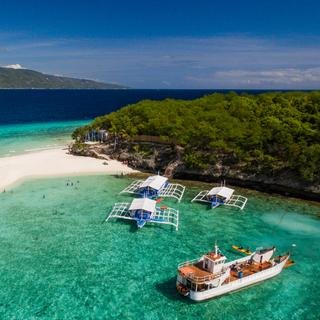
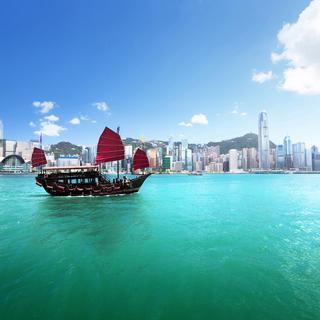

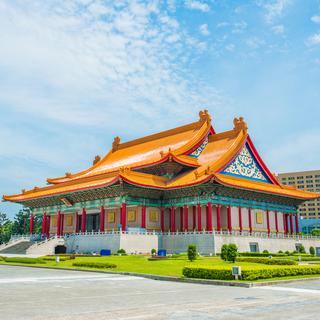
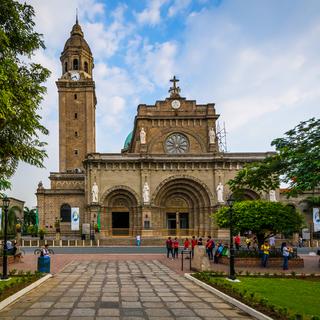


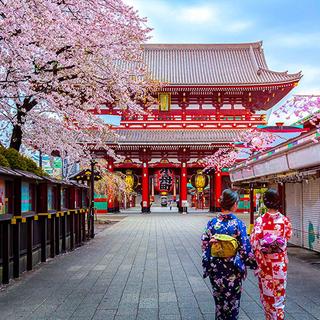
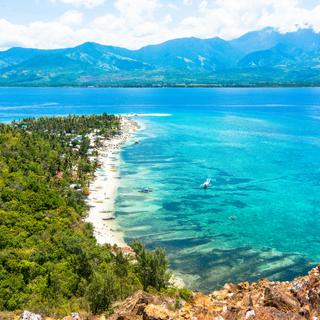




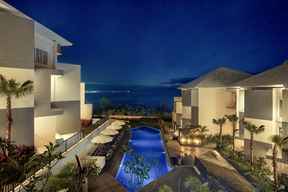
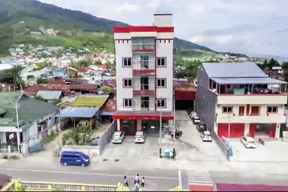






 Facebook
Facebook Instagram
Instagram TikTok
TikTok Youtube
Youtube